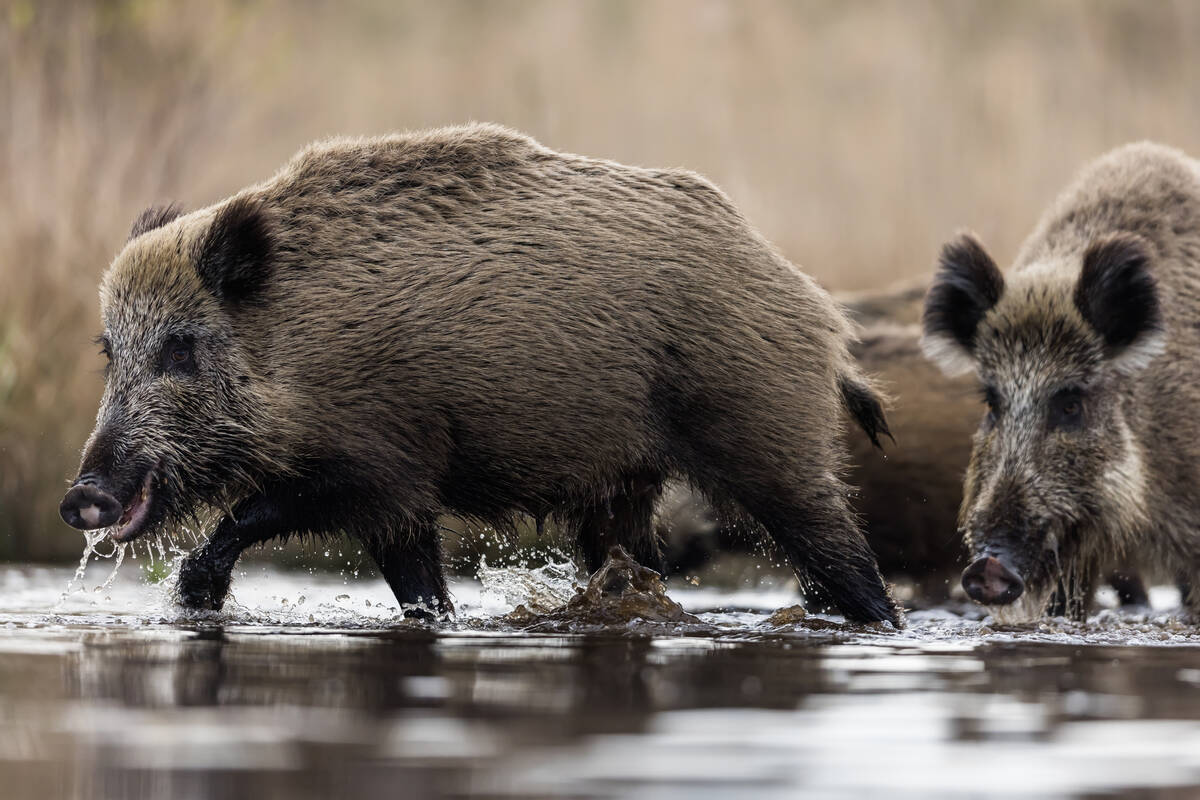The construction of two hog barns shouldn’t be a news story, but it is in Manitoba where almost no barns have been built over the last eight years.
The two new barns, which are expected to be built in the Brandon area and the Interlake region, will be feeder barns because the province needs more market weight hogs, said George Matheson, chair of the Manitoba Pork Council.
Manitoba exported 2.9 million weanlings to the United States last year, so there is no shortage of sows and young pigs. What’s lacking are barns to feed those weanlings.
Read Also

Manitoba bans wild boar possession
Manitoba has tightened the regulatory status of Eurasian wild boar in an effort to help fight back against invasive wild pigs.
“If we can retain some of those small pigs and feed them out … and have the carcasses processed at our Manitoba processing facilities, that would help that side of the industry a great deal,” said Matheson, who farms near Stonewall.
Maple Leaf Foods operates Canada’s largest hog slaughter plant in Brandon, but the facility has been operating well below capacity because Manitoba doesn’t produce enough hogs.
The Maple Leaf plant can process more than 90,000 hogs per week when it is at full capacity. Estimates suggest it has been handling around 70,000 per week over the last few years.
The hog shortfall is largely blamed on a provincial moratorium and burdensome environmental regulations on hog barn construction to prevent nutrients from entering creeks, rivers and streams.
Manitoba’s new Progressive Conservative government, elected April 19, may loosen regulations to stimulate construction but it hasn’t released its policies yet.
The scarcity of feeder barns prompted Manitoba producers to ship their weanlings to U.S. barns, mostly in Iowa and Minnesota, despite country-of-origin labelling rules that discriminated against Canadian livestock.
“Tyson Foods had an agreement where those Canadian born pigs would be processed on certain days,” Matheson said.
Mike Teillet, the pork council’s manager of sustainable development, said there’s a chance that more barns could be constructed this summer. In addition to the two completed applications, others are calling the council and asking questions about building barns.
Industry players may be feeling more hopeful this spring, but there are still lingering questions about long-term profitability.
“Risk management is something this industry really needs,” Matheson said. “We had so many years of weak prices from 2006-13.”
Manitoba Pork developed a hog stabilization plan in 2012 that would have been funded by a levy on hog sales and provided access to a line of credit. The program would have offset financial losses in periods of low prices and helped producers survive through market downturns.
The provincial government refused to provide financial security for the program, so Manitoba Pork had to abandon the plan.
Matheson said business risk management programs are still needed.
“It’s a very beneficial industry, so I can’t see why governments wouldn’t want to give us some assurances so we can have a viable industry here.”















